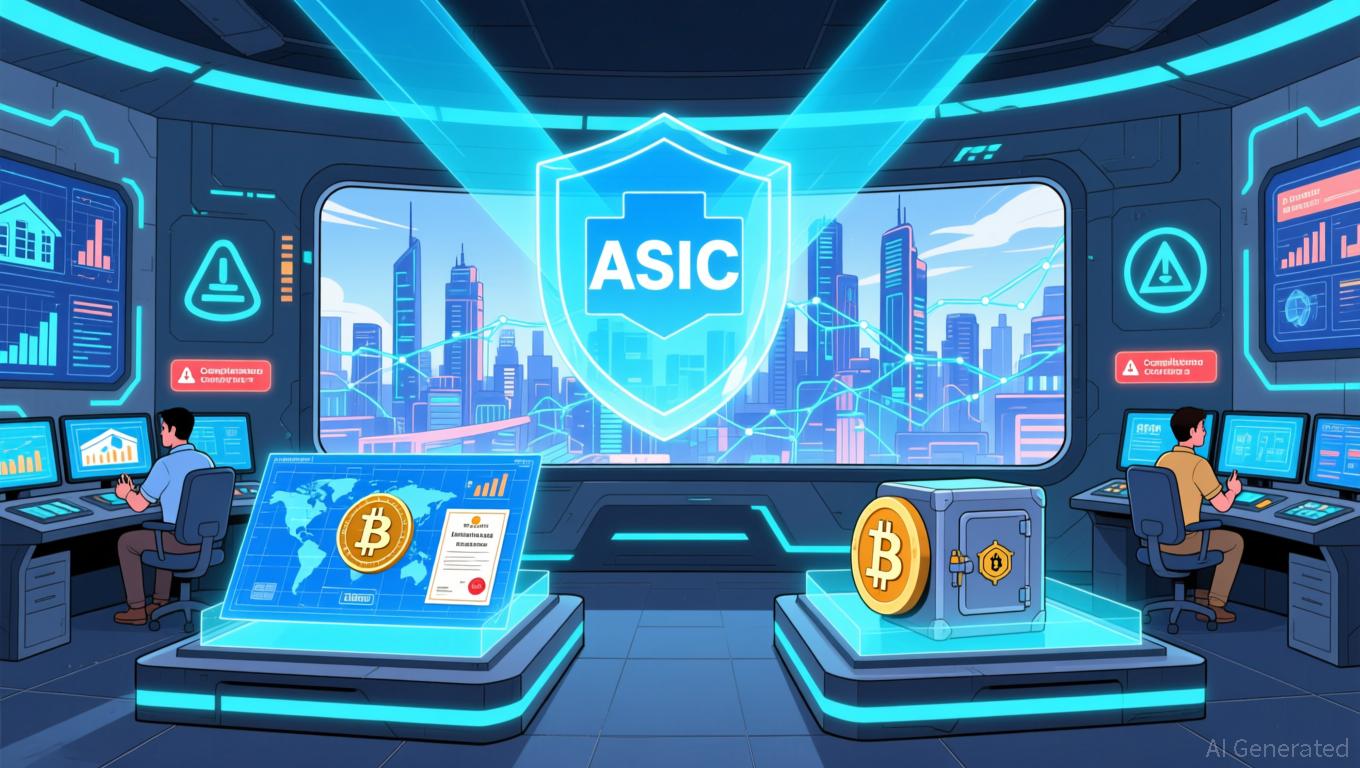Exploring New Challenges in Cryptocurrency Portfolio Management
- 2025 crypto landscape balances innovation with rising token scams, driving stricter regulatory enforcement and operational safeguards. - DOJ/SEC actions against fraudsters like Roger Ver and ByBit hackers, plus UK FCA sandboxes, highlight global accountability trends. - Blockchain analytics tools (TRM Labs, Chainalysis) enable real-time AML/KYC compliance and $2.17B+ stolen fund recovery through AI-driven monitoring. - FINRA/Georgetown and university programs build crypto literacy, while Kryptosphere-Del
Regulatory Enforcement: Strengthening Responsibility
Regulators have ramped up their scrutiny of crypto asset management in light of notable token fraud incidents. In the US, the Department of Justice (DOJ) and Securities and Exchange Commission (SEC) have taken firm measures against those engaged in illicit conduct. For example, the DOJ reached a deferred prosecution deal with Roger Ver, a
The SEC’s no-action letters have also brought more certainty to the industry.
Operational Safeguards: The Role of Blockchain Analytics
Blockchain analytics now form the backbone of contemporary crypto risk controls. Tools from companies like TRM Labs, Chainalysis, and CipherTrace are essential for
Innovative frameworks from Elliptic and the Wolfsberg Group further strengthen these capabilities. Elliptic’s 2025 analysis points to the use of graph neural networks to spot fraudulent wallets in dynamic transaction webs, while the Wolfsberg Group highlights AI-based systems for identifying new forms of illicit behavior
Education and Financial Literacy: Empowering the Industry
With the crypto industry’s growth, educational programs have become a cornerstone of risk reduction.
These initiatives go beyond theoretical learning. Groups like Kryptosphere, present in more than 26 educational institutions,
Case Studies: Frameworks in Practice
Real-world adoption of risk management systems after token fraud incidents provides tangible examples of institutional adaptation. Elliptic’s research highlights cross-chain risk monitoring to address scams like pig butchering and deepfake authorizations,
In Switzerland, where banks must comply with strict EU 5AMLD and FINMA standards, blockchain data analysis is now routine.
Conclusion: Integrating Risk Management Approaches
The integration of regulatory action, blockchain analytics, and educational progress is reshaping how crypto assets are managed. Although token fraud remains a challenge, the industry’s response—through tighter oversight, sophisticated compliance solutions, and a more knowledgeable workforce—shows a strong commitment to resilience. For those investing in crypto, the takeaway is clear: thriving in this space requires not only technical know-how but also a thorough understanding of the regulatory and operational foundations that support the market. As the sector advances, those who emphasize these protections will be best equipped to handle future risks and seize new opportunities.
Disclaimer: The content of this article solely reflects the author's opinion and does not represent the platform in any capacity. This article is not intended to serve as a reference for making investment decisions.
You may also like
Ethereum News Today: Ethereum's 60 Million Gas Spike: Major Milestone or Foreshadowing $80,000?
- Ethereum’s gas limit hits 60M, supported by 513K+ validators, boosting scalability ahead of Fusaka. - Vitalik Buterin highlights targeted gas cost hikes for inefficient operations to incentivize smart contract optimization. - zkSync’s Airbender innovation enables faster proof generation, paving the way for future gas limit expansions. - Fusaka upgrade (2025) aims to solidify Ethereum’s economic model, with long-term gas targets up to 150M via EIPs. - Despite $2,859 price, analysts project $80K potential

Australia Connects Conventional and Digital Finance Through Groundbreaking Cryptocurrency Regulations
- Australia introduces 2025 Digital Assets Framework Bill, requiring crypto exchanges and custodians to obtain AFSL and operate under ASIC oversight. - The legislation creates two license types: "digital asset platform" for crypto trading and "tokenized custody platform" for real-world asset tokens, with tailored compliance standards. - Small operators with <$5,000 per customer and <$10M annual volume get lighter requirements, aiming to balance innovation with consumer protection. - Projected to unlock $24

Security Systems Technology and ICP Network Expansion: A Cybersecurity-Focused Path Forward for Decentralized Infrastructure
- ICP's decentralized identity and encryption address cybersecurity gaps, enabling secure financial behavior through blockchain innovations. - Cross-chain interoperability with Bitcoin/Ethereum via Chain Fusion drives DeFi growth, unlocking $B+ liquidity through trustless swaps. - Institutional adoption and 30% 2025 price growth reflect ICP's appeal, bolstered by Azure/Google partnerships and 1.2M active wallets. - Regulatory scrutiny and 11% price volatility highlight risks, though technical resilience an

Why ZEC Is Soaring in Late 2025 and Its Implications for Cryptocurrency Investors
- Zcash (ZEC) surged to $9.24B market cap in late 2025 driven by 1,300% transaction volume spikes and 30% shielded pool adoption. - Institutional investors like Cypherpunk and Reliance allocated significant ZEC holdings, signaling privacy assets' growing institutional acceptance. - Zcash's hybrid privacy model - optional shielded transactions with blockchain compatibility - outperformed Monero as privacy demand rose amid data monetization trends. - Ecosystem expansion through OKX relisting and Solana integ
